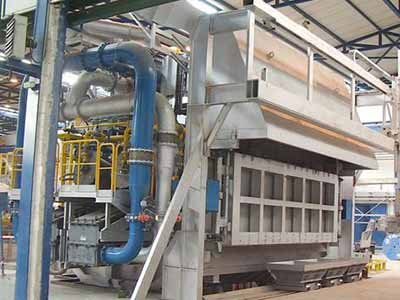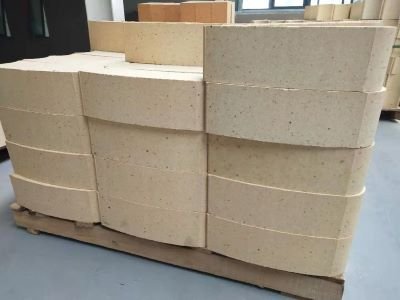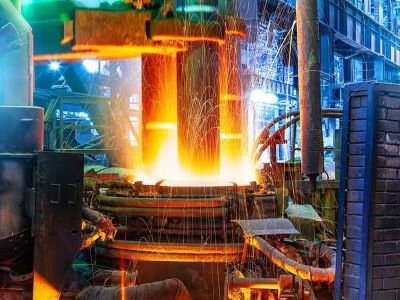The reverberatory furnace “swings” the flame toward the material surface. Instead of relying on the flame to penetrate the material directly, the heat is “reflected” back to the molten pool by radiation from the roof. This “discount” makes it take the lead in energy consumption, metal quality and furnace life.
1.The reverberatory furnace has a short heat path, thus saving fuel
The flames first lick the roof and then bend towards the melt, instantly raising the roof temperature. The hot roof immediately radiates back, and the heat falls almost vertically into the metal.
The shorter the path, the less heat is carried away by the exhaust gas. For the same tonnage of charge, a reverberatory furnace burns 8%–12% less fuel than a direct-flame furnace.

In addition, due to the reduced heat loss of flue gas, the hot air system can raise the recovery temperature by another 80°C, further saving gas.
2.The flame does not penetrate the material, the metal absorbs less air and the amount of slag is low
The flame of a direct-flame furnace penetrates the material pile, kneading oxygen and hydrogen directly into the melt. The flame of a reverberatory furnace stops at the top of the furnace, and the metal surface is only exposed to radiation, so the time it is exposed to oxygen is shortened by half.
As the gas content decreases, the slag volume also decreases. Slag removal time is shortened, and metal loss is reduced by 0.3%-0.5%.
It can be said that for the same charge, the reverberatory furnace can collect dozens more kilograms of metal.
3.The temperature curve of the reverberatory furnace is flat, and the life of the refractory bricks is long
Top radiation spreads the heat evenly, turning the hot spot from a “tongue of fire” of a traditional direct-flame furnace into a “whole hot blanket.”

At the same time, the life of refractory bricks can also be extended. The furnace roof is no longer subjected to repeated localized 1550°C spikes, reducing the spalling rate of high-alumina bricks or corundum-mullite bricks by 30%.
The furnace walls do not need to be stacked with too thick magnesia carbon bricks. The backing can be replaced with lightweight insulating bricks, which can reduce the shell temperature by 40°C, saving both electricity and bricks.
4.Other kiln disadvantages
Compared to reverberatory furnaces, other types of furnaces have slight disadvantages. For example, blast furnaces and electric furnaces. While these have their own unique advantages in certain processes, they often cannot match the thermal efficiency and refractory requirements of reverberatory furnaces.
For example, a blast furnace requires an external heat source to maintain its high temperature. A reverberatory furnace, on the other hand, raises the furnace temperature by reflecting heat.

Furthermore, while electric furnaces heat faster, they consume more energy, have more complex refractory requirements, and have higher maintenance costs. Therefore, reverberatory furnaces often have a clear advantage in terms of long-term operation and economy.
In short, once you fully grasp the advantages of a reverberatory furnace, the next step is to allocate bricks specifically for the roof, walls, and slag line. Then, choose a refractory brick supplier who can readily restock, aligning the furnace lifecycle with your production schedule. This way, the fuel and metal saved becomes pure profit.
